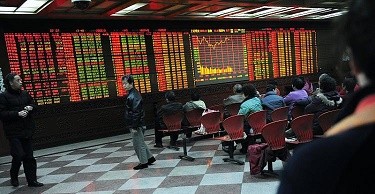After tumbling for five consecutive trading days since Aug. 20, mainland stock markets experienced a sharp rebound as the Shanghai Composite Index rose by 5.34 percent, closing at 3,083.59 points from 156.30 points.
The Shenzhen Composite Index rose by 3.58 percent, from 354.63 points to 10,254 points.
Last Monday, the Shanghai Composite Index slumped to an 8.49-percent figure, the biggest one-day loss in eight years.
Overall, China's stock market has plunged by more than 40 percent since peaking in mid-June and analysts cited various reasons for the rebound on Thursday.
Li Daxiao, an analyst at the Shenzhen-based Yingda securities, stated in a report by the Global Times that the stock rebound was partly triggered by the central bank's decision to cut interest rates and the reserve requirement ration (RRR) of banks.
"Although the cut may not be directly intended to support the markets, the RRR cut and interest rate cut can, in effect, help stabilize mainland stock exchanges," Li clarified.
The People's Bank of China (PBOC) has announced on Tuesday that is implementing a cut in one-year lending and deposit rates by 25 basis points, as well as a 55-basis point reduction of the RRR.
Furthermore, the government's efforts in supporting the stock market has yielded investigations into a number of Chinese brokerages, including CITIC Securities Co. and Haitong Securities, for possible stock trading rule violations.
However, some experts are shrugging off the celebratory mood and are exercising caution, wary that the effects of the rebound could be short-lived.
Qian Qimin, a researcher at Shanghai-based Shenwan Hongyuan Securities, reminded the community that the rebound does not necessarily indicate a full-on recovery since a period of stability has yet to begin.



























